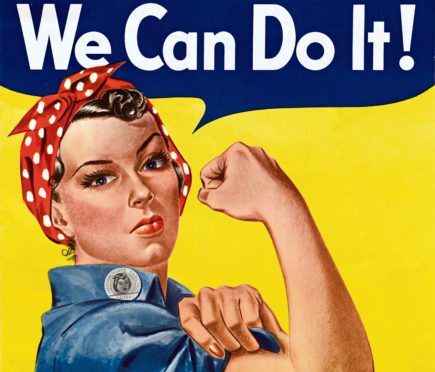
In 1919, The Sex Disqualification (Removal) Act paved the way for women to enter the workplace and join a range of professions. But climbing the career ladder wasn’t easy. Author Jane Robinson tells Laura Smith the Honest Truth about trailblazing women at work.
What was The Sex Disqualification (Removal) Act?
Soon after the First World War, British women aged 30 and over won the vote. The next logical step was to allow them into the professions. The Sex Disqualification (Removal) Act of 1919, or SDRA, let women join the professions and professional bodies, to sit on juries and be awarded degrees.
How did the bill come about?
The war had lots to do with it. While men were away fighting, women filled their places at home. A few donned metaphorical bowler hats and pinstripes to work in offices; others grabbed overalls and grease-guns, training as engineers and mechanics.
Some hospitals were staffed entirely by women. In peacetime, many of them campaigned to keep their new independence. As they now had a vote, politicians were obliged to listen.
What was their impact on key industries?
In professions like medicine, law, architecture, engineering and academia, women were treated at best as guests, at worst as an invasion force. Gentlemen would never stoop to taking orders from ladies.
Some were refused high-calibre posts on the grounds of being too plain; others because they were distractingly pretty. And there was the claim that women couldn’t work in a man’s world, as no one had installed any ladies’ lavatories.
How did society respond?
The career woman was a fascinating new phenomenon. Her pioneering spirit inspired androgynous “flapper-girl” fashions. New “ladies columns” in the press featured make-up tips and advice on how to handle the boss.
The advertising industry recognised a whole new market: the modern “salary-earning girl”.
Who is your favourite female pioneer?
Gertrude Leverkus, one of the first women architects. Before she broke into the profession, it was popularly supposed that ladies couldn’t climb ladders – literally – and that even if they did, they would never keep their heads on the scaffolding. Gertrude defied all the prejudice to emerge a well-respected professional.
Any influential Scots?
Scottish architect Edith Burnet Hughes set up her own practice in Glasgow in 1920. She did try to join an established partnership in London, but she was refused membership owing to there being no ladies’ lavatory.
She won competitions to design Glasgow’s Mercat Cross and a war memorial in Coatbridge. She was married, with three children. And Victoria Drummond, who was apprenticed to a Dundee shipyard. In 1922, she was appointed 10th engineer on a round voyage to Australia.
Despite passing her second engineer’s examination, she could only find a position as a fifth engineer, because – she maintained – she was a woman. She eventually served as chief engineer on foreign vessels, and was awarded an MBE.
What can we learn from these female trailblazers?
I’m a passionate believer in the importance of role models. When the SDRA was passed, these women were like adventurers in a forbidden land. They were told that thinking too much withered the womb and were blamed for breaking up families.
Yet they persevered, finding fulfilment, often as working wives and mothers.
What about today?
Achieving equality is a long game, and in many ways, we’re playing it still. Women hoping to join the elite professions can still feel like imposters.
We should take heart from the pioneers, who proved something they themselves could never be quite sure of, because they hadn’t done it yet: ladies can climb ladders, as high as you like.
Ladies Can’t Climb Ladders by Jane Robinson, Black Swan, available now

Enjoy the convenience of having The Sunday Post delivered as a digital ePaper straight to your smartphone, tablet or computer.
Subscribe for only £5.49 a month and enjoy all the benefits of the printed paper as a digital replica.
Subscribe